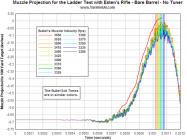Hello everyone,
I am gathering data to try to explain a certain phenomena. Why do some rifles center of groups trend down or up as velocity increases. The goal of this thread will be to develop a calculator that reliably calculates barrel length and profile required to produce a flat or general downward trend in group position as velocity increases.
In this thread I would like you to post your load development targets if you meet a few criteria listed below.
PLEASE READ THEM ALL BEFORE POSTING DATA
1. You know the dimensions of the barrel. Use format below in inches. (please include the chambering as well ex. 308 win, 6br, ect..)
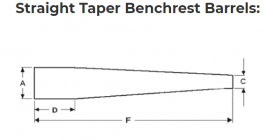
Sporter and
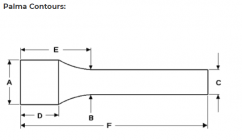
2. The muzzle is unthreaded and no weights were attached to the barrel (THIS INCLUDES MAGNETOSPEEDS) This makes calculations much easier.
3. The scope is untouched while shooting groups. No adjustments to elevation or windage made between groups.
4. The barrel is completely free floating to the action/ recoil lug.
5. More than one shot per charge level.
6. Make sure you know what range the target was shot at.
7. Need to have bullet and powder used and powder charges listed.
8. Each group needs to be identifiable to correlate to a charge level.
9. Average velocity for each group or velocity for each individual shot in the group.
10. Barrel steel type. Stainless or chromoly
BONUS POINTS not needed but helpful.
1. If you have group center position relative to POA from on target or similar software.
2. Photo of the rifle in the configuration the load dev was run in.
3. Jump to lands to jam length for each group.
example:
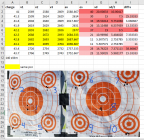
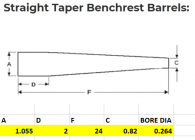
Thanks guys.
I am gathering data to try to explain a certain phenomena. Why do some rifles center of groups trend down or up as velocity increases. The goal of this thread will be to develop a calculator that reliably calculates barrel length and profile required to produce a flat or general downward trend in group position as velocity increases.
In this thread I would like you to post your load development targets if you meet a few criteria listed below.
PLEASE READ THEM ALL BEFORE POSTING DATA
1. You know the dimensions of the barrel. Use format below in inches. (please include the chambering as well ex. 308 win, 6br, ect..)

Sporter and

2. The muzzle is unthreaded and no weights were attached to the barrel (THIS INCLUDES MAGNETOSPEEDS) This makes calculations much easier.
3. The scope is untouched while shooting groups. No adjustments to elevation or windage made between groups.
4. The barrel is completely free floating to the action/ recoil lug.
5. More than one shot per charge level.
6. Make sure you know what range the target was shot at.
7. Need to have bullet and powder used and powder charges listed.
8. Each group needs to be identifiable to correlate to a charge level.
9. Average velocity for each group or velocity for each individual shot in the group.
10. Barrel steel type. Stainless or chromoly
BONUS POINTS not needed but helpful.
1. If you have group center position relative to POA from on target or similar software.
2. Photo of the rifle in the configuration the load dev was run in.
3. Jump to lands to jam length for each group.
example:


Thanks guys.
Last edited:










